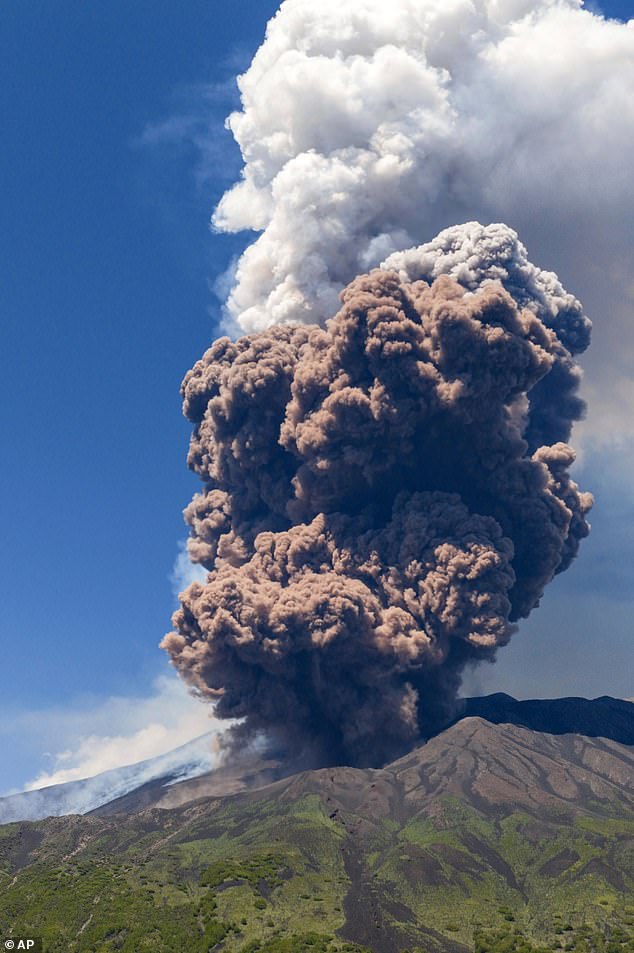
The Earth's volcanic landscape, long considered a realm of geological stability punctuated by periodic eruptions, is facing a potential upheaval due to the accelerating effects of climate change. Scientists are now raising concerns about the possibility of a surge in volcanic activity worldwide, triggered by the melting of glaciers and ice sheets. This phenomenon, far from being a localized issue, could have significant global implications, impacting both climate patterns and human populations.
The Glacial Grip: How Ice Suppresses Volcanic Activity
For millennia, massive glaciers have exerted a considerable influence on the behavior of volcanoes nestled beneath them. The immense weight of these ice formations acts as a natural lid, suppressing the volume of eruptions. This pressure allows magma, molten rock residing deep within the Earth, to accumulate in vast reservoirs beneath the surface. Think of it like a pressure cooker – the lid keeps everything contained until the pressure becomes too great.
The Release: Melting Ice and Explosive Eruptions
As climate change accelerates, glaciers are retreating at an alarming rate. This melting removes the immense weight that once suppressed the underlying volcanoes. The Earth's crust, now relieved of this pressure, begins to "relax," and gases trapped within the accumulated magma start to expand. This buildup of pressure can trigger explosive volcanic eruptions from the deep-seated magma reservoirs.
This process isn't uniform across the globe. The key factor is the initial presence of thick glacial coverage over a magma chamber. The critical point arrives when these glaciers begin to recede, releasing the pressure. This is currently occurring in several regions, most notably Antarctica, raising concerns about future volcanic activity in that area.
Evidence from the Past: Lessons from Patagonia
To understand the link between glacial retreat and volcanic eruptions, researchers have turned to the past. Studies conducted on volcanoes in Southern Chile, a region heavily influenced by the Patagonian Ice Sheet, have provided valuable insights. By using argon dating and crystal analysis on six volcanoes, including the dormant Mocho-Choshuenco volcano, scientists have reconstructed the volcanic history of the region and its relationship to glacial cycles.
The research revealed that during the peak of the last ice age (approximately 26,000 to 18,000 years ago), the thick ice cover significantly reduced the volume of eruptions. This allowed a substantial reservoir of magma to accumulate as deep as 15 kilometers beneath the surface. However, as the ice sheet rapidly melted at the end of the last ice age, the sudden release of pressure triggered a series of explosive volcanic eruptions.
Global Implications: Regions at Risk
The implications of this research extend far beyond Iceland, where increased volcanicity has already been observed. Scientists believe that other continental regions with a history of glacial coverage, such as parts of North America, New Zealand, and Russia, also warrant closer scientific attention. These areas may be particularly vulnerable to an increase in volcanic activity as glaciers continue to retreat.
Climate Feedback Loop: A Vicious Cycle
Increased volcanic activity can have a complex and potentially detrimental impact on the global climate. In the short term, volcanic eruptions release aerosols into the atmosphere, which can temporarily cool the planet by reflecting sunlight back into space. The 1991 eruption of Mount Pinatubo in the Philippines, which reduced global temperatures by approximately 0.5°C, serves as a stark reminder of this effect.
However, the long-term effects of increased volcanic activity can be far more concerning. Over time, the cumulative effect of multiple eruptions can contribute to long-term global warming due to the buildup of greenhouse gases, such as carbon dioxide and methane, released during eruptions. This creates a positive feedback loop, where melting glaciers trigger eruptions, and the eruptions, in turn, contribute to further warming and melting. This cycle exacerbates climate change and its associated consequences.
The Need for Further Research and Monitoring
The potential for increased volcanic activity due to climate change underscores the urgent need for further research and monitoring. Scientists must continue to study the relationship between glacial retreat and volcanic behavior to better understand the risks and potential consequences. This includes developing more sophisticated models to predict future eruptions and assessing the vulnerability of different regions. Continuous monitoring of volcanic activity in regions with retreating glaciers is also crucial for providing early warnings and mitigating potential disasters.
By understanding the complex interplay between climate change and volcanic activity, we can better prepare for the challenges that lie ahead and work towards a more sustainable future. This requires a global effort, involving scientists, policymakers, and communities, to address the root causes of climate change and mitigate its potential impacts on our planet.
0 Response to "Climate Change Ignites Dormant Volcano Threat"
Post a Comment